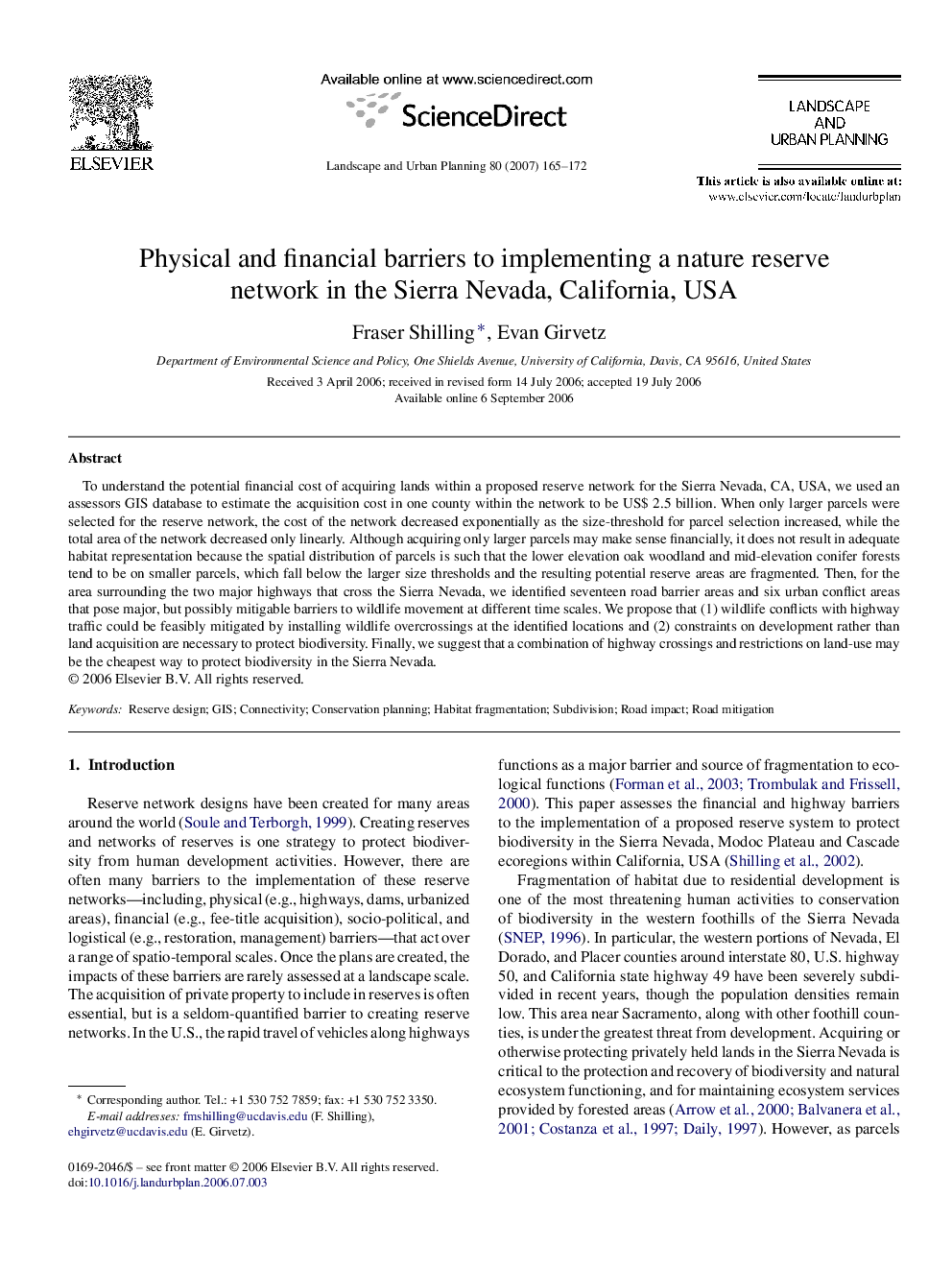| Article ID | Journal | Published Year | Pages | File Type |
|---|---|---|---|---|
| 1050697 | Landscape and Urban Planning | 2007 | 8 Pages |
To understand the potential financial cost of acquiring lands within a proposed reserve network for the Sierra Nevada, CA, USA, we used an assessors GIS database to estimate the acquisition cost in one county within the network to be US$ 2.5 billion. When only larger parcels were selected for the reserve network, the cost of the network decreased exponentially as the size-threshold for parcel selection increased, while the total area of the network decreased only linearly. Although acquiring only larger parcels may make sense financially, it does not result in adequate habitat representation because the spatial distribution of parcels is such that the lower elevation oak woodland and mid-elevation conifer forests tend to be on smaller parcels, which fall below the larger size thresholds and the resulting potential reserve areas are fragmented. Then, for the area surrounding the two major highways that cross the Sierra Nevada, we identified seventeen road barrier areas and six urban conflict areas that pose major, but possibly mitigable barriers to wildlife movement at different time scales. We propose that (1) wildlife conflicts with highway traffic could be feasibly mitigated by installing wildlife overcrossings at the identified locations and (2) constraints on development rather than land acquisition are necessary to protect biodiversity. Finally, we suggest that a combination of highway crossings and restrictions on land-use may be the cheapest way to protect biodiversity in the Sierra Nevada.
